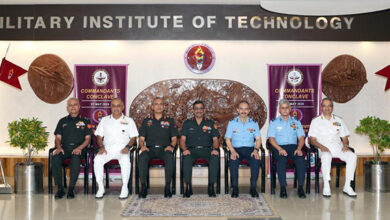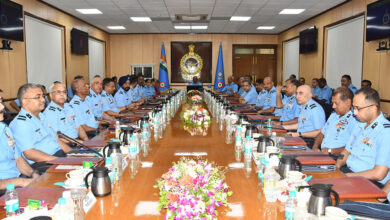How will IAF acquire its multi-role jets?
New Delhi. The Indian Ministry of Defence has dropped the life-cycle cost calculation for its coming tender for 126 new Multi Role Combat Aircraft (MRCA) as there will be too many “imponderables” over the rather long life of these jets extending up to around 2050.
Reliable sources told India Strategic that a new Verifiable Cost Model (VCM) had been adopted, according to which the new aircraft should last either over a period of 40 years or an actual flying time of 6,000 hours, “whichever is earlier”.
There are however strong views on including the Life Cycle Cost also, particularly as some aircraft are cheaper to buy and expensive to maintain while others are expensive to maintain and cheaper to maintain. Although a last-minute inclusion of Life Cycle Cost, favoured by European and US aircraft manufacturers, is still not ruled out, the decision more or less is made to keep this calculation out.
The tender, technically called the Request for Proposals (RfP), should be out within this month or latest by August, according to current indications. Broadly, the following VCM parameters will be considered:
1. Direct Acquisition Cost or Initial Cost including that of weapons and spares
2. Warranty for the first two years;
3. Licence Royalty for manufacture in India;
4. Cost of Transfer of Technology;
5. Cost of Initial Training
6. Operating costs like consumption of fuel and lubricants.
While the Indian Air Force (IAF) has specified the multi role capability for the new jets, the government would insist on Guaranteed Serviceability and Adequate Supply of Spares throughout the lifetime of the aircraft before finalizing the negotiations with the vendors.
This means that if a supplier wants to close down its assembly line, then it has to give this information well in advance and ensure that alternative arrangements are made, preferably within India.
There have been problems with the Russians over supply of spares. And the French failed to inform India well in advance that they were closing their Mirage 2000 facility. Both have jacked up the costs of spares.
Sources said that in the case of MRCA, cost-escalation will be there and accepted but it will be based on “pre-established and well accepted indices for the duration of the contract”. Inflation is part of the economy but there will be a cap in the final agreement, irrespective of unforeseen circumstances like political upheavals or sudden closure of a manufacturing facility.
“It’s not fair for a company to close its facility and then demand 25 per cent hike,” sources said.
It was stated that the finance ministry had cleared a budget of nearly $10 billion (Rs.42,000 crores) and the RfP should be out within this month “but not later than mid- August”.
As the project is huge, 50 percent direct offset has been mandated, preferably in the aircraft project itself.
Defence Secretary Shekhar Dutt however told India Strategic in separate interaction that offsets could go to other defence projects “but only if India requires them”.
Notably, Dutt is the author of the Offsets policy that he had first mooted in 1994. Initially, MoD mandarins did not pay attention to this proposal but later, when he became Secretary for Defence Production, the political bosses saw the merit in his ideas and accepted the policy.
MoD now has a Defence Offset Facilitation Agency (DOFA) headed by a Joint Secretary level officer, Dr Kiran Chadha, to help work out implementation of the offsets clause in major acquisition agreements.
The government has accepted the IAF’s insistence that the aircraft should be the best available with potential upgrade capability.
While the technical requirements called the Air Staff Requirements (ASR) as laid down by a panel headed by the Vice Chief of Air Staff (VCAS) are secret and will be given only to the six foreign companies in the fray, IAF says the new aircraft should be able to execute missions from air defence to ground and maritime attack as well as reconnaissance.
Mid-air refueling capacity is a must for all new aircraft from now on.
The six vendors will be given six months to respond to the RfP, and after an evaluation of the technical documents, field trials of aircraft and their systems will be undertaken to match the claims of the manufacturer.
These will be followed by weapon tests in the country of respective manufacturer. The vendors will submit two documents — Technical Bids and Commercial Bids.
Commercial offers of only those who qualify technically will be opened and contract negotiations will be conducted with the lowest, or what is known as L-1, bidder.
After this is finalized, the Defence Ministry and IAF officials processing the contract will put up the contract for approval to the Defence Minister who will send it to the Cabinet Committee of Security (CCS) for final endorsement, and the tender would be awarded to the winner.
The Ministry expects the first batch of 18 aircraft, which will be supplied in flyway condition, to be with IAF by 2012, thanks to the speedy and time-bound process envisaged in the recent Defence Procurement Policy (DPP) 2006.
The aircraft manufacturers will be free to choose public sector or private partners but as only the Hindustan Aeronautics Limited (HAL) has an established aircraft manufacturing facility in India, it will be the lead integrator.





